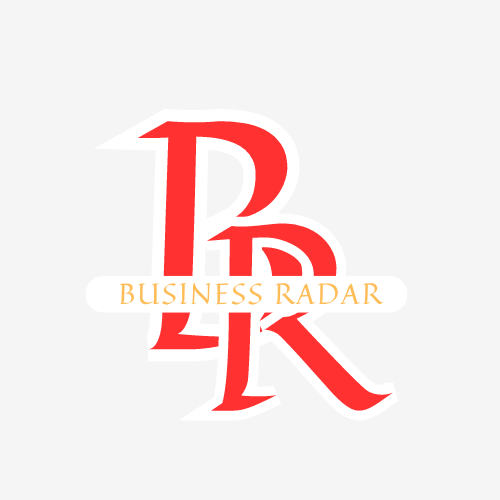Money Market Funds (MMFs) have emerged as a cornerstone of financial planning for teachers in Kenya, offering a low-risk, high-liquidity investment vehicle to grow savings while ensuring accessibility for school fees, emergency funds, or retirement planning. With the Teachers Service Commission (TSC) employing over 400,000 teachers across Kenya, many educators seek stable investment options to complement their salaries, which range from Ksh 28,491 for entry-level secondary school teachers to over Ksh 159,534 for chief principals in 2025. MMFs, regulated by the Capital Markets Authority (CMA), invest in short-term, low-risk instruments like treasury bills, fixed deposits, and commercial papers, making them ideal for risk-averse professionals like teachers. We’ll cover top-performing funds, key considerations, and practical steps to start investing, ensuring teachers can make informed decisions to secure their financial future.
Why Money Market Funds Are Ideal for Teachers in Kenya
Teachers in Kenya, employed by the TSC, face unique financial challenges and opportunities. With predictable monthly salaries and access to T-Pay for payslip management, educators need investments that align with their income cycles and goals, such as saving for school fees, building emergency funds, or planning for retirement. MMFs are particularly suited for teachers due to:
- Low Risk: MMFs invest in high-quality, short-term securities, ensuring capital preservation, which is critical for risk-averse educators.
- High Liquidity: Funds can be withdrawn within 24–72 hours, ideal for covering unexpected expenses like medical emergencies or school trips.
- Stable Returns: MMFs offer competitive yields (10–16% annually in 2025), surpassing traditional savings accounts and 91-day treasury bills (7.5%).
- Flexibility: Low minimum investments (as low as Ksh 100) allow teachers to start small and top up regularly.
- Daily Compounding: Interest is calculated daily and compounded monthly, maximizing growth over time.
- TSC-Aligned Financial Planning: Teachers can use MMFs to save for short-term goals (e.g., holiday planning) or long-term objectives (e.g., retirement), complementing SACCO dividends or HELB loans.
Top 10 Money Market Funds for Teachers in Kenya in 2025
Based on 2025 performance data, net returns, minimum investment requirements, and teacher-specific needs, the following MMFs stand out as the best options. Rankings are derived from fund manager reports, CMA data, and reputable sources like Business Today and Vasili Africa, with net returns reflecting deductions for 15% withholding tax and management fees.
- Cytonn Money Market Fund
- Annual Rate: 16.61% (Net Return: 13.24%)
- Minimum Investment: Ksh 1,000 (Top-ups: Ksh 100)
- Why It’s Great for Teachers: High yields and low entry barriers make it accessible for teachers starting with modest savings. Daily compounding ensures steady growth, ideal for saving for school fees or emergency funds. Dial *809# to sign up.
- Features: No entry/exit fees, speedy withdrawals (2–3 days), invests in treasury bills and fixed deposits.
- Fund Manager: Cytonn Investments, known for consistent performance.
- Lofty-Corban KSH Money Market Fund
- Annual Rate: 16.26% (Net Return: 14.38%)
- Minimum Investment: Ksh 1,000 (Top-ups: Ksh 100)
- Why It’s Great for Teachers: Offers one of the highest net returns, perfect for teachers aiming to maximize returns on small, regular contributions. Its Ksh 1 billion AUM milestone reflects stability.
- Features: Invests in bank deposits, treasury bills, and commercial papers; no lock-in period.
- Fund Manager: Lofty-Corban Investments, contactable at (+254) 728 242 002.
- GulfCap Money Market Fund
- Annual Rate: 16.25% (Net Return: 12.58%)
- Minimum Investment: Ksh 1,000 (Top-ups: Ksh 100)
- Why It’s Great for Teachers: A newcomer with competitive yields, suitable for teachers seeking reliable returns for short-term goals like holiday planning or professional development.
- Features: High liquidity, low-risk investments, managed by GulfCap Africa.
- Fund Manager: GulfCap, emerging as a trusted player in 2025.
- Etica Money Market Fund
- Annual Rate: 15.90% (Net Return: 13.11%)
- Minimum Investment: Ksh 100 (Top-ups: Ksh 100)
- Why It’s Great for Teachers: The lowest entry point makes it ideal for young or entry-level teachers (e.g., those earning Ksh 28,491–35,614). Daily interest crediting allows visible growth.
- Features: No lock-in period, invests in high-quality securities, managed by Etica Capital Ltd.
- Fund Manager: Etica Capital, CMA-regulated with a strong track record.
- Kuza Money Market Fund
- Annual Rate: 15.39% (Net Return: 12.03%)
- Minimum Investment: Ksh 5,000 (Top-ups: Ksh 1,000)
- Why It’s Great for Teachers: Offers solid returns for mid-career teachers (e.g., earning Ksh 45,000–70,000) saving for larger goals like home renovations or business startups.
- Features: High liquidity, invests in treasury bills and fixed deposits, CMA-regulated.
- Fund Manager: Kuza Asset Management, known for reliability.
- Apollo Money Market Fund
- Annual Rate: 15.82% (Net Return: ~13.5%)
- Minimum Investment: Ksh 1,000 (Top-ups: Ksh 1,000)
- Why It’s Great for Teachers: Backed by APA Insurance, it’s a stable choice for senior teachers (e.g., principals earning Ksh 105,182–159,534) planning for retirement.
- Features: No initial fees, invests in low-risk securities, withdrawals in 2–3 days.
- Fund Manager: Apollo Asset Management.
- Sanlam Money Market Fund
- Annual Rate: 13.65% (Net Return: ~11.6%)
- Minimum Investment: Ksh 2,500 (Top-ups: Ksh 1,000)
- Why It’s Great for Teachers: High AUM and no initial fees make it attractive for teachers seeking stability and moderate returns for family welfare funds.
- Features: Daily interest calculation, monthly compounding, invests in fixed deposits and treasury bills.
- Fund Manager: Sanlam Investments East Africa.
- Madison Money Market Fund
- Annual Rate: 13.62% (Net Return: ~11.5%)
- Minimum Investment: Ksh 5,000 (Top-ups: Ksh 1,000)
- Why It’s Great for Teachers: Suitable for teachers with slightly higher savings capacity, offering competitive returns for medium-term goals like professional certifications.
- Features: Withdrawals in 3 days, invests in diversified low-risk securities.
- Fund Manager: Madison Investment Managers.
- Co-op Money Market Fund
- Annual Rate: 14.03% (Net Return: ~12%)
- Minimum Investment: Ksh 2,000 (Top-ups: Unlimited)
- Why It’s Great for Teachers: Backed by Cooperative Bank, it’s a trusted option for teachers already using Co-op Bank services, ideal for SACCO-like savings habits.
- Features: No top-up limits, invests in treasury bills and corporate notes, high liquidity.
- Fund Manager: Co-op Trust Investment Services.
- Britam Money Market Fund
- Annual Rate: 13.35% (Net Return: ~11.3%)
- Minimum Investment: Ksh 1,000 (Top-ups: Ksh 1,000)
- Why It’s Great for Teachers: Offers flexibility and professional management, perfect for teachers saving for short-term goals like holidays or tech upgrades. Sign up via *778# or MyBritam App.
- Features: No upfront charges, invests in fixed income securities, withdrawals in 2–3 days.
- Fund Manager: Britam Asset Managers, with yields of 10.78–13.35% in 2024.
Key Considerations for Teachers Choosing MMFs
Teachers should evaluate MMFs based on their financial goals, risk tolerance, and income levels. Here are critical factors to consider:
- Net Returns: Focus on net returns after 15% withholding tax and management fees (1–2% annually). For example, Cytonn’s 16.61% annual rate yields 13.24% net.
- Liquidity: Ensure the fund allows quick withdrawals (24–72 hours) for emergencies, as most MMFs do.
- Minimum Investment: Low entry points (Ksh 100–5,000) suit teachers with varying salaries. Etica and Cytonn are ideal for beginners.
- Fund Manager Reputation: Choose CMA-regulated managers like Cytonn, Lofty-Corban, or Britam for credibility and stability.
- Fees: Avoid funds with high initial or redemption fees. Most top MMFs charge only annual management fees.
- Investment Horizon: MMFs are best for short-term goals (3–12 months). For longer-term goals, consider fixed income or equity funds.
- TSC Salary Alignment: Match investments to salary cycles. For example, a teacher earning Ksh 45,000 can invest Ksh 2,000 monthly in Co-op MMF.
How Teachers Can Start Investing in MMFs
Getting started with MMFs is straightforward, even for teachers new to investing. Follow these steps:
- Identify Financial Goals:
- Short-term: School fees, holidays, emergency funds.
- Medium-term: Professional development, home renovations.
- Long-term: Retirement, business startups.
- Choose a Fund:
- Compare yields, minimum investments, and liquidity (see top 10 list above).
- Contact fund managers via their websites, USSD codes (e.g., *809# for Cytonn), or mobile apps (e.g., MyBritam).
- Gather Requirements:
- National ID or passport.
- KRA PIN certificate.
- Bank account details or M-Pesa number for transactions.
- Recent passport-size photo (for some funds).
- Open an Account:
- Online: Visit the fund’s website (e.g., www.cytonn.com) or use mobile apps/USSD.
- In-Person: Visit fund manager offices or partner banks (e.g., Co-op Bank for Co-op MMF).
- Complete the application form and submit documents.
- Fund Your Account:
- Transfer the minimum investment via bank (e.g., KCB, Account No. 1172676828 for some funds) or M-Pesa (e.g., Paybill 522522 for Britam).
- Set up standing orders for regular top-ups aligned with TSC salary payments.
- Monitor Your Investment:
- Receive monthly statements via email or app.
- Track daily yields in newspapers or fund websites.
- Reinvest returns or withdraw as needed.
Funding and Support for Teachers
Teachers can leverage various financial tools to support MMF investments:
- TSC Salary: Regular salaries (Ksh 28,491–159,534) provide a stable base for monthly investments.
- SACCO Dividends: Many teachers belong to SACCOs, which paid dividends like Ksh 63,994 in 2024. Reinvest these into MMFs.
- HELB Loans: Access TVET or personal loans to boost initial investments, repayable via T-Pay deductions.
- NG-CDF Bursaries: For teachers in rural areas, bursaries can free up income for investing.
- Chamas: Teachers in investment groups can pool funds for higher MMF contributions, benefiting from collective returns.
Challenges and Opportunities for Teachers Investing in MMFs
Challenges
- Limited Financial Literacy: Some teachers lack knowledge of MMFs, preferring SACCOs or bank savings.
- Income Constraints: Entry-level teachers (Ksh 28,491–35,614) may struggle to invest regularly.
- Market Fluctuations: MMF yields vary with CBK rates (11.25% in 2025), affecting returns.
- Perception Barriers: MMFs are sometimes seen as complex compared to traditional savings.
Opportunities
- Rising Yields: MMF rates (10–16%) outpace inflation (6.3% in 2024) and treasury bills, offering real returns.
- Digital Access: USSD codes, apps, and online platforms make investing easy for tech-savvy teachers.
- TSC Support: T-Pay and payroll automation simplify financial planning.
- Government Backing: CMA regulation ensures safety and transparency, boosting confidence.
Comparison with Other Investment Options for Teachers
- SACCOs: Offer dividends (10–15%) but lower liquidity than MMFs. Best for long-term savings.
- Treasury Bills: Yield 7.5% (91-day) but require lock-in periods, unlike MMFs’ daily access.
- Savings Accounts: Yield 1–5%, far below MMFs’ 10–16%, with no compounding benefits.
- Equity Funds: Higher returns (15–20%) but riskier, unsuitable for risk-averse teachers.
MMFs balance profitability, safety, and liquidity, making them the best fit for most teachers.
Tips for Teachers to Maximize MMF Investments
- Start Early: Even Ksh 100 monthly in Etica MMF grows significantly over time due to compounding.
- Automate Investments: Set up standing orders to align with TSC salary payments.
- Diversify Goals: Use multiple MMFs for different goals (e.g., Cytonn for emergencies, Sanlam for school fees).
- Monitor Market Trends: Follow CBK rate changes to anticipate yield shifts.
- Seek Financial Advice: Consult fund managers or financial advisors via www.vasiliafrica.com for personalized plans.
- Reinvest Returns: Compound earnings to accelerate wealth-building.
Money Market Funds are a game-changer for teachers in Kenya, offering low-risk, high-liquidity, and competitive returns to achieve financial goals in 2025. With top performers like Cytonn (16.61%), Lofty-Corban (17.26%), and Etica (15.90%), teachers can grow their savings from as little as Ksh 100, aligning investments with TSC salaries and SACCO dividends. By choosing CMA-regulated funds, leveraging digital platforms, and following practical steps, educators can secure their financial future, whether saving for school fees, emergencies, or retirement. Start today by contacting fund managers via USSD, apps, or websites, and transform your teaching career into a foundation for wealth-building. For more details, visit www.cytonn.com, www.eticacap.com, or www.britam.com.





